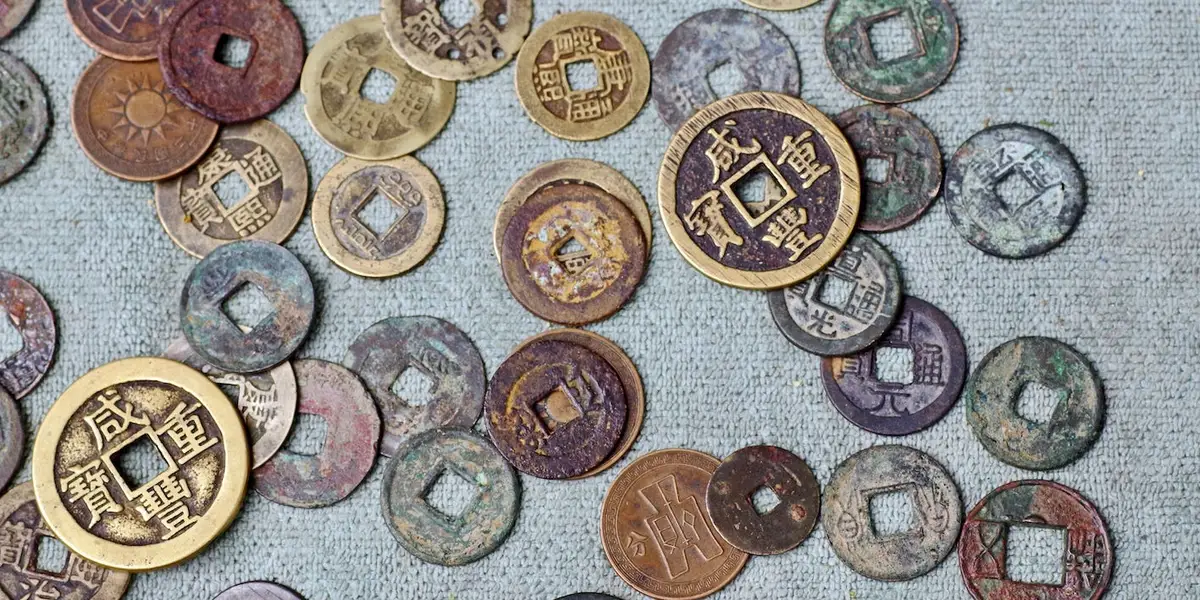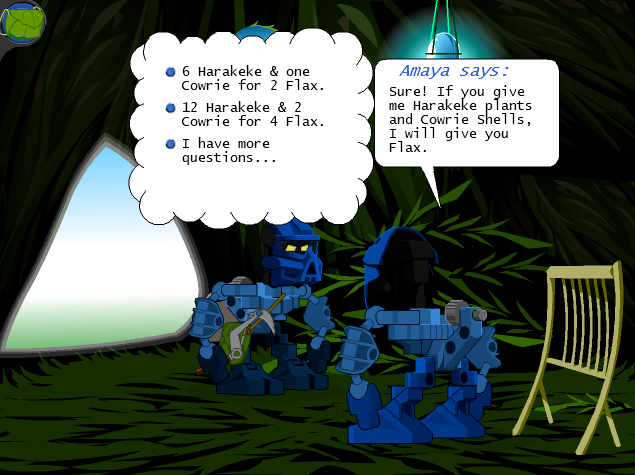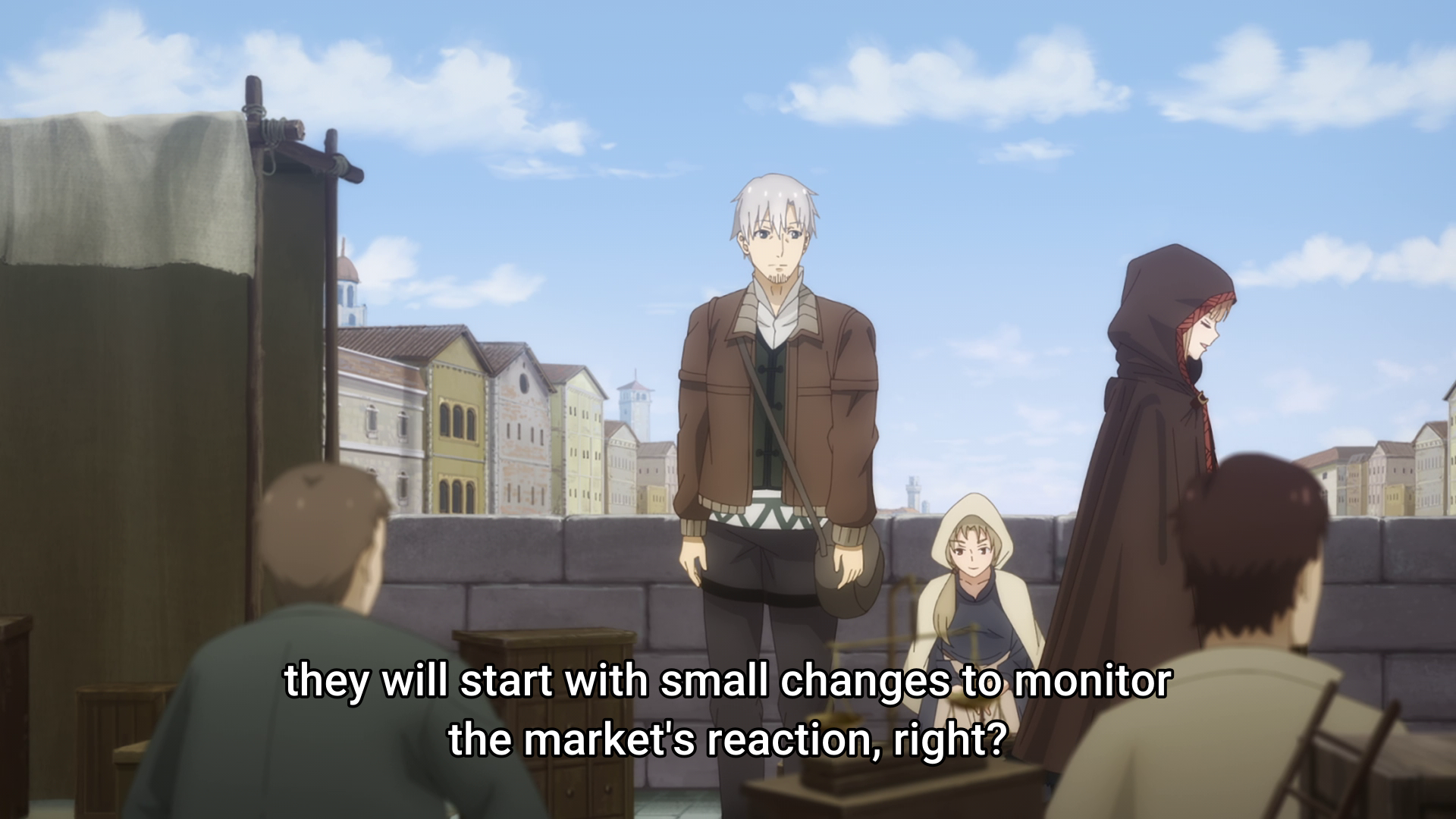Almost two months ago, I reviewed crafting mechanics in games before laying out the ground rules for crafting in my fantasy heartbreaker, The Serket Hack. During that process, I boldly announced that I was going to shoot currency with a gun. This is the follow-through.

The Lore Reason
In The Serket Hack, humanity has been scattered to numerous isolated villages in an ever-shifting world of magic called the Echolands. Because the Wild Echo is constantly changing, reliable trade is impossible. Each journey requires some measure of trailblazing, and travelers are never certain of their destination.
Individual villages have their own unique currencies, usually representative of a local resource or specialty. A seaside village might have a shell-based currency, while a desert town uses clay runes. These coins hold no value outside of their village of origin. On some level, they communicate trust: an outsider spending this currency only has those coins to begin with because they were of service or provided something to that village.
The Design Reason
The default approach to money is to treat it as a simple number. You have 10 gold pieces. If we ignore weird denominations like electrum (worth half a gold piece), coins usually function as decimal fractions of the gold piece — either one tenth (silver) or one one-hundredth (copper).
This is exceedingly boring.
Many games trend towards solving this problem by making wealth more abstract. Daggerheart, despite being functionally identical to gold pieces, has received praise for using “handfuls”, “bags”, and “chests” of gold as their unit of wealth. Blades in the Dark uses “coin” as a vague measurement, where one coin is a month’s wages and ten coin is a treasure trove: the silver pieces of day-to-day transactions are not tracked. Prismatic Wasteland has a post detailing how to abstract wealth into a stat that can be rolled for spending purposes.
I think we should do the exact opposite.
Making wealth more abstract muffles the symptom of the problem rather than addressing it head-on. You can make money more interesting by making it more interesting. This system is an attempt to change wealth from an untethered value into groups of “favors” associated with specific places and communities within the game world. The benefits are threefold:
- It causes players to grow attached to locations as they accumulate wealth there.
- Players who want to travel are incentivized to engage in trading and the economy.
- Arriving in a new town requires players to make a connection either through doing a quest for the locals or trading with them.

Design intent is all well and good, but when the rubber meets the road, we’re left with a question:
“How much does this item cost?”
The GM needs to be able to answer this question for any given item. We can split this into two factors:
- What is the item’s value?
- What does that item cost here?
The former necessitates a method for boiling down the worth of an item into a single number. This is something we can achieve with a mechanical system. The latter factor requires an assessment of current conditions, and is affected by the narrative and the player’s skill at bargaining. As I started getting into the design math for this system, I realized that the process of turning an item into a number is also required for freeform crafting. While it is still my intention to establish a critical mass of crafting recipes for the system to be sufficiently player-facing, there will inevitably be situations where a player wants to craft something off-menu. By providing the GM with a system for generating their own alchemical recipes, we can do the heavy lifting ahead of time.
Execution of Value
In order to determine how much currency something is worth, consult the following table. That amount is equal to the total number of elements required to craft the item using alchemy (more on this later).
| Aspect | Group | Examples | # of Currency / Elements |
|---|---|---|---|
| It Fits In Your Pocket | an orange, a watch, a diamond | +2 | |
| You Can Hold It | a shovel, a spellbook, a gold statue | +4 | |
| How big is it? | It Can Hold You | a rowboat, a warhorse, a banquet table | +8 |
| You Fit Inside It | a house, a carriage, a tower | +16 | |
| Bigger | a mountain, an ocean, a city | +100 | |
| Anyone Can Make It | a sandwich, a bonfire, a makeshift spear | +1d4 | |
| An Apprentice Can Make It | a horseshoe, a journal, a coil of rope | +1d6 | |
| What skill does it take to make? | A Journeyman Can Make It | a greatsword, a clock, a feast | +2d6 |
| A Master Can Make It | a crown, a train, a palace | +3d6 | |
| Beyond | a miniature sun, a living automaton, a potion of immortality | +5d20 | |
| Mundane | a stick, a feather, some freshwater | x1 | |
| Common | an iron ingot, an oak plank, a bottle of milk | x1 | |
| How rare are the materials? | Curated | a turtle shell, a cask of gunpowder, a sheet of carbon steel | x2 |
| Rare | a dragon scale, diamond dust, aged wine | x3 | |
| Unique | the leviathan’s eye, the moon’s halo, the first fire | x5 |
- Determine which size group the object falls into. Pick the smallest one that works.
- Determine how complicated the object is to make. Pick the least complicated.
- Determine the availability of the most rare component. Pick the most common valid group.
These groups are meant to serve as guidelines more than anything, and it won’t break anything if something gets miscategorized. They are meant to give the GM a starting point and a default frame of reference before any tweaks.
Here’s what it looks like to apply the system on random objects:
| Item | Math | Result |
|---|---|---|
| Shovel | 4 +1d6 x1 | 6 |
| Chair | 4 +1d6 x1 | 7 |
| Iron Sword | 4 +2d6 x1 | 9 |
| Masterwork Axe | 4 +3d6 x2 | 32 |
| Plate Mail | 8 +2d6 x2 | 24 |
| Boat | 8 +2d6 x1 | 15 |
| Castle | 100 +3d6 x3 | 333 |
| Apple | 2 +1d4 x1 | 3 |
| Crown | 4 +3d6 x3 | 42 |
Execution of Trade
Basic understanding of supply and demand overrule the appraisal of an item’s value. In other words: the farmer is not going to buy that crown because she’s got no use for it. “Apply common sense” is hardly a mechanic, but it’s still worth stating explicitly. With that in mind:
Alter the price of an item…
| Modifier | Condition |
|---|---|
| x0.5 | …if it’s something the village specializes in |
| x1.0 | …if it’s something the village can produce |
| x1.5 | …if it’s something the village can’t produce |
| x0.5 | …if it’s an everyday item |
| x1.0 | …if it’s a bespoke item or trade good |
| x1.5 | …if it’s a luxury or treasure |
| x0.5 | …on a failure when trying to haggle while selling |
| x1.0 | …on a minor success when trying to haggle while selling |
| x1.5 | …on a major success when trying to haggle while selling |
| x1.5 | …on a failure when trying to haggle while buying |
| x1.0 | …on a minor success when trying to haggle while buying |
| x0.5 | …on a major success when trying to haggle while buying |

Magic numbers are hard to create and will only be ironed out through thorough playtesting. I don’t know how good these values are and whether or not they will hold up. What I do know is that they feel good and the system provides the level of granularity I’m looking for.
A wooden shield has a different cost compared to an iron one. An iron shield made by an apprentice is worth less than one made by a master crafter. Two shields made by two apprentices with the same materials will have variation in price just from the random luck of the dice. The price for all of these shields is going to be different if you’re buying them in a mining town compared to a farming village.
What do you think? Have I missed any edge cases? Does this look helpful to GMs trying to run an economy? Let me know your thoughts.

2 Comments
It definitely looks interesting! I like having fixed prices at least during Character generation but for actual in world play this looks like a really useful system to use.
Would you be OK with others adapting this for their own systems?
Absolutely! feel free to hack & adapt as you like.